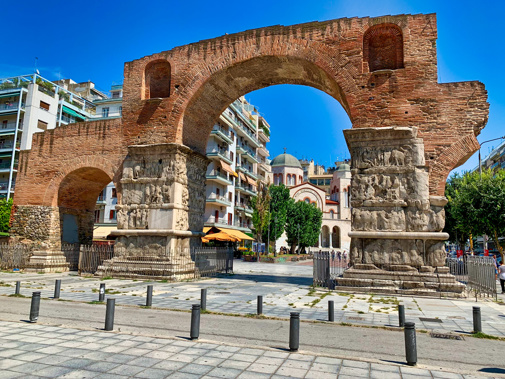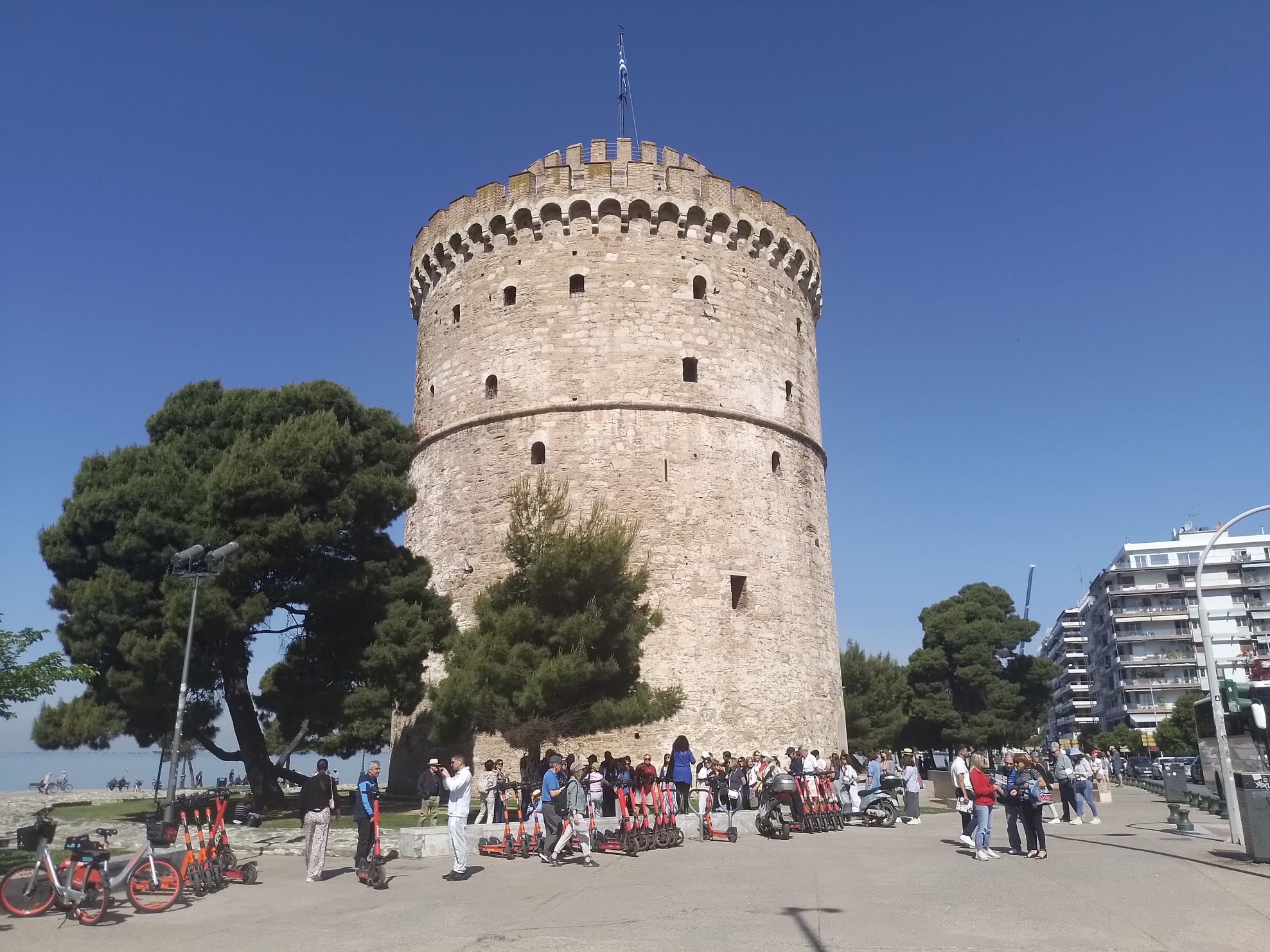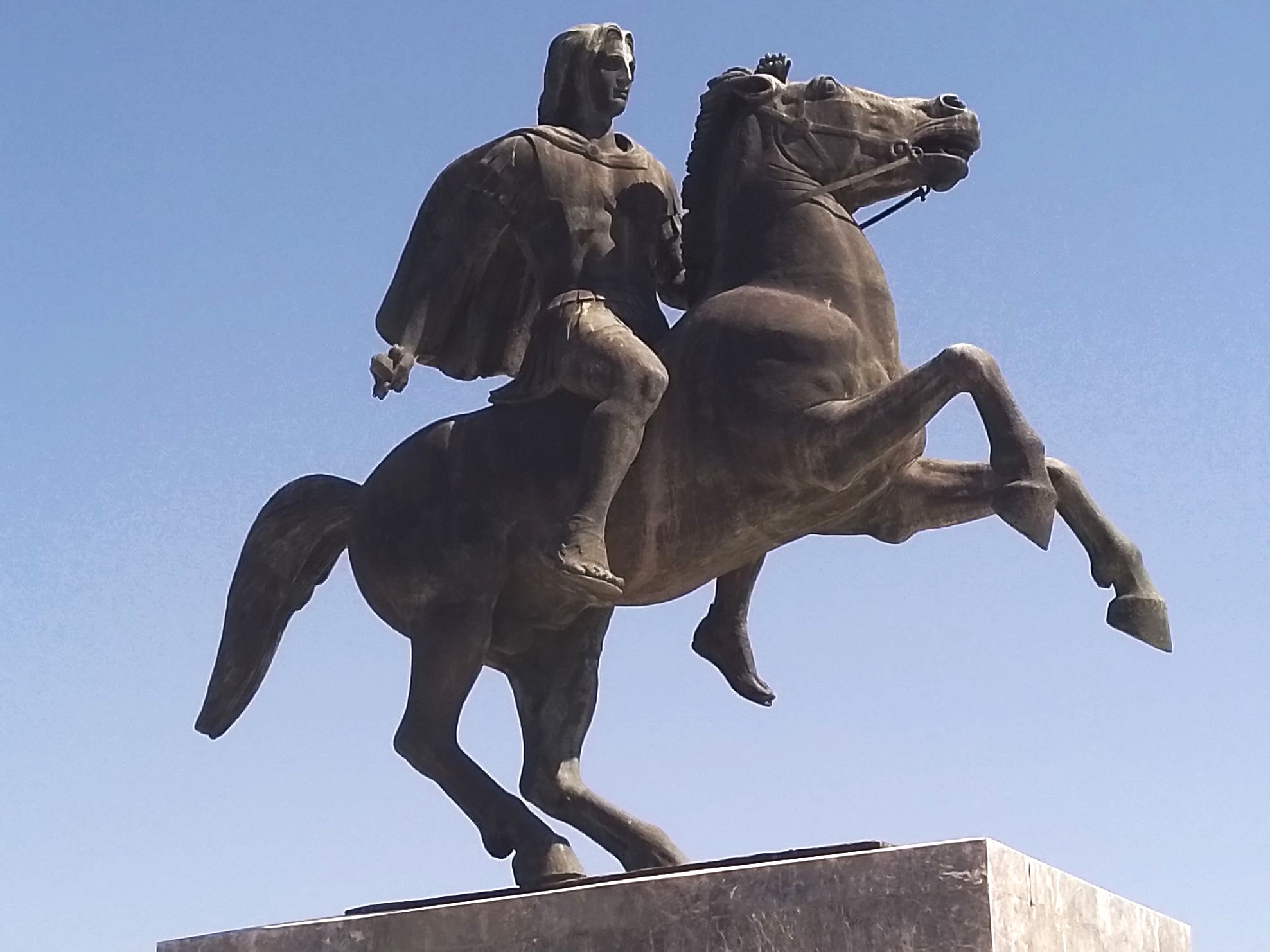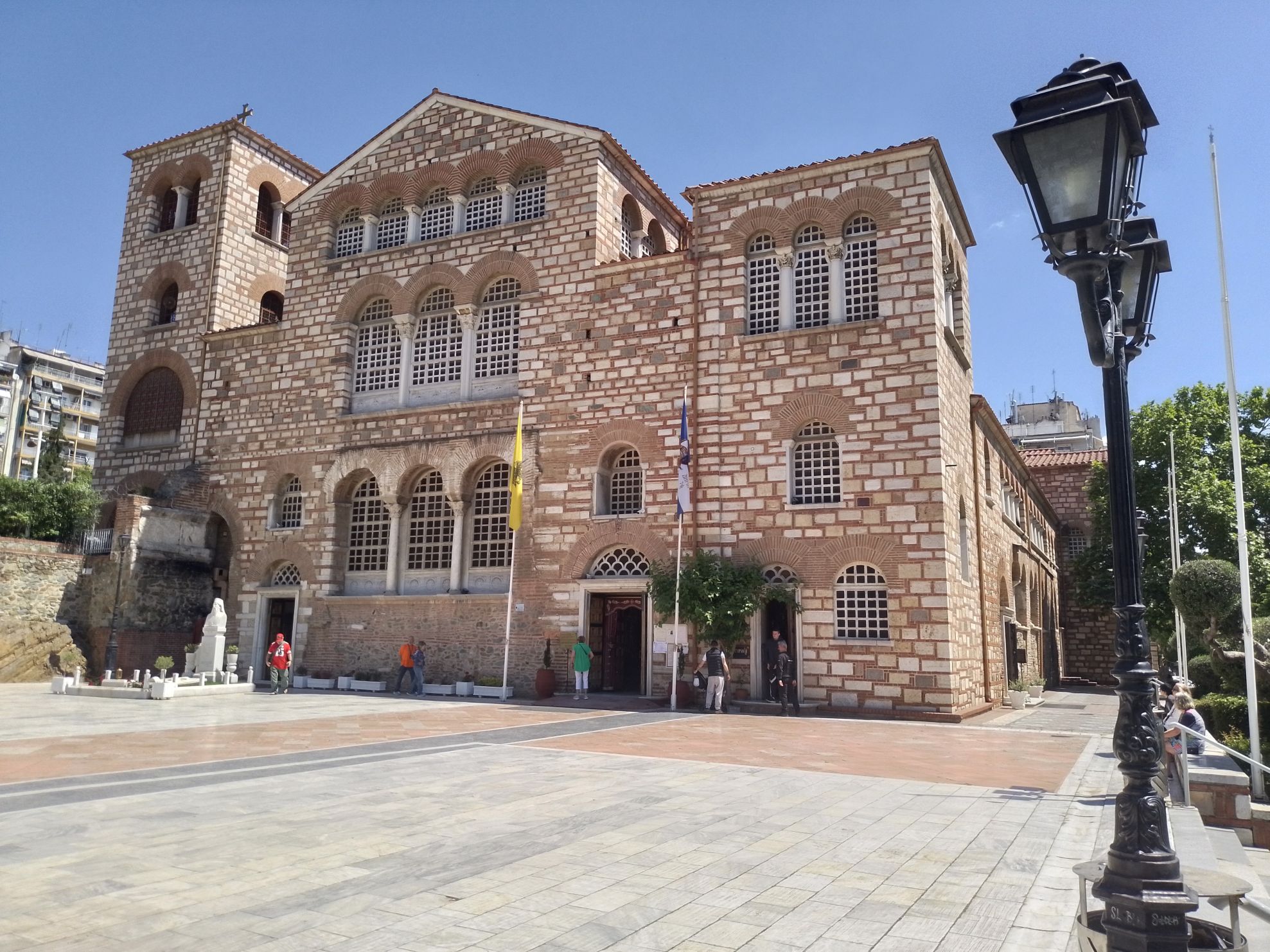
Thessaloniki pulsates with the cosmopolitan culture and verve of a big city with the friendly ambience and seaside charm of a smaller town. It's the ideal place to experience another side to Greece beyond the heavy-hitters and heaving crowds of Athens. I ventured to Thessaloniki aboard Celestyal Cruises’ Idyllic Aegean 7-day cruise, which takes you to Thessaloniki, Mykonos, Crete, Kusadasi, Santorini and Milos, from Athens.
Northern Greece’s charismatic city is stacked in multiethnic heritage, influenced by the different civilizations that have left their calling cards, including the Romans, Venetians, and Ottoman Turks. From ancient ruins and Byzantine churches to the world-class museums, history hangs heavy in Thessaloniki. My riveting shore excursion with Celestyal Cruises distilled the city’s treats into a most enriching city exploratory.
Keeping a watchful eye over the sweeping waterfront promenade, the most emblematic landmark of Thessaloniki is the White Tower. Built by the Ottoman Turks around 1530, a century after they conquered the city, this sturdy, imposing tower was principally used as a prison, along with being part of its seaward defence system. The story goes that it only became known as the White Tower in 1890, when a prisoner entirely repainted it white, in exchange for early release.
 White Tower on the waterfront. Photo / Mike Yardley
White Tower on the waterfront. Photo / Mike Yardley
I was visiting Thessaloniki on the weekend, and it appeared half the city was stepping out on the vast marbled promenade, stretching the legs and taking in the views. The food stalls were doing a brisk trade, which brings me to two must-try snacks. The traditional go-to beloved in Thessaloniki is bougatsa, stuffed with custard cream in gossamer-thin filo pastry. They are heavenly. So is tsoureki, a braided sweetened bread.
It was a crystal-clear, bluebird day and gazing across the waters of Thermaikos Bay, Mount Olympus, the highest mountain in Greece, was sporting a late-season snow coat. Greek people understandably revere this mountain and if you remember your poetry classics, Homer's Iliad venerated Olympus as the home of the gods, aka the Olympians. This mighty massif cuts a striking figure, with a thrusting rock face stretching 20km’s wide.
An enormous statue of Alexander the Great proudly astride his horse, rises up from the waterfront promenade, too. As a young teenager, his teacher was the great philosopher Aristotle, ahead of the young warrior king’s epic conquests across the Mediterranean and Middle East. (The city is home to Aristotle University, the nation’s largest.) Thessaloniki is the capital of the Greek region of Macedonia, not to be confused by its border neighbour, the Republic of North Macedonia and its capital, Skopje. They both share the spoils of claiming Alexander the Great as a national hero, because back in the day, both regions formed Ancient Macedonia.
 Alexander the Great. Photo / Mike Yardley
Alexander the Great. Photo / Mike Yardley
In a city brimming with markers of the past, the Rotunda of Galerius is Thessaloniki's most precious ancient monument. Built in the early fourth century, it was most likely intended to be Roman emperor Galerius' mausoleum, although he was not buried here. It stands alongside the Arch of Galerius, the ancient town’s main entrance gate, with ornately carved reliefs depicting battle scenes. The rotunda was later converted into a cathedral, then a mosque. The minaret still stands as a totem to the Islamic era. After liberation from the Turks in 1912, the Rotunda was transformed into the Church of Saint George. This grandiose sanctuary makes a striking impression, thirty metres high and cylindrical in stature, this domed masterpiece is to Thessaloniki, what the Pantheon is to Rome.
Another landmark to visit and admire is the Church of Saint Dimitrios, the town's patron saint. Dimitrios was a Roman soldier who was executed at this site in 306AD for converting to Christianity. At the time, it was a Roman bathhouse. The murder was ordered by Emperor Galerius who was ruthless in his persecution of Christians. You can still see the preserved bathhouse ruins within the church’s crypt, which were only excavated about 50 years ago, including the well where it’s believed the saint’s impaled body was first disposed. The church you see today was built in the 7th century, a massive basilica, richly embellished over the centuries with marble columns, dazzling chandeliers and exquisite gilded mosaics from the early Byzantine era. Many Orthodox pilgrims flock to the church on the patron saint’s feast day, when the chest holding the relics of Dimitrius is opened up. This is a question of faith, but many locals vow and declare that the relics exude fragrant myrrh, which wafts in the air for several city blocks beyond the church. Healings and miracles have been attributed to this essential oil-exuding saint for centuries. Orthodox Christians believe the scent of myrrh confirms the holiness of a saint.
 St Dimitrios Cathedral. Photo / Mike Yardley
St Dimitrios Cathedral. Photo / Mike Yardley
The Archaeology Museum is a must, world-acclaimed for its superb collection of artifacts that were uncovered in Thessaloniki, as well as all over ancient Macedonia. And we are talking seriously ancient, including findings from a Stone Age settlement in Pieria to a Bronze age Macedonian tomb, with an ornately painted interior, housing the bones of a young woman and her newborn baby. There are artifacts from the ancient palace built by Galerius and the museum is also home to Europe’s oldest surviving book, an ancient Greek papyrus scroll, dating from 340BC, written during the reign of King Phillip II of Macedonia, the father of Alexander the Great. For more antiquity exploration, you can visit the Royal Tombs where Phillip II is buried. For the city’s best views, head up to Ano Poli, the historic upper town. This atmospheric quarter is characterised by its steep, winding streets and pedestrian alleyways. Numerous fountains from the Ottoman era reveal the quarter's eye-catching Turkish influence.
Alexander the Great and St. Dimitrios are not the only global figures intimately connected with Thessaloniki. Another towering luminary who hails from here is Mustafa Kemal Ataturk. The founding father of the modern Turkish state was born in the Apostle Paul street house in 1881, which is now a museum, when Thessaloniki was still under Ottoman control. The Young Turks movement was launched from the city leading to the Turkish War of Independence, which culminated in the crumbling Ottoman Empire replaced with a new secular Turkish republic, headed up by Ataturk in 1923. With Thessaloniki returning to Greek control after so many centuries, in 1935, the city council decided to give the Ataturk’s family home to the Turkish State who converted it into a museum dedicated to the life and achievements of their founding father. Add that to your check-list.
Cruise the Greek Islands the Greek way, where passionate hospitality, local pride and insider knowledge are all part of the package. The seasoned pros at Celestyal Cruises deliver the only genuine Greek cruising experience, across the Aegean and Mediterranean. The standard Celestyal Experience package includes accommodation, all of your meals, drinks with meals, entertainment, gratuities, and a complimentary shore excursion discount. For added-value, upgrade to the Celestyal Plus+ Experience package, which includes more dining options, an enhanced drinks package, complimentary WiFi and a super-sized US$170 excursion discount. Celestyal’s Idyllic Aegean 7-day cruise from Athens takes you to Thessaloniki, Mykonos, Crete, Kusadasi, Santorini and Milos. For the best deals on all upcoming cruises and their full range of itineraries, head to https://celestyal.com
Mike Yardley is our resident traveller on Jack Tame Saturday Mornings.
Take your Radio, Podcasts and Music with you









